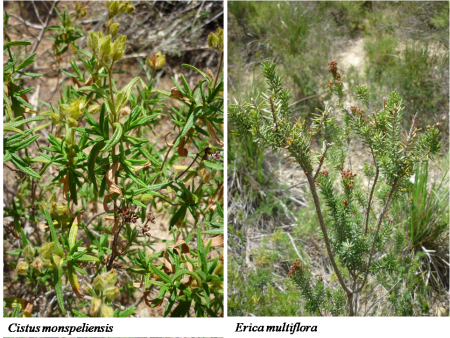
Objective:
Understanding and quantify the role played by undergrowth in the resilience and adaptation to climate change of the pine forest in Tunisia, by comparing the state of vegetation of the undergrowth species of a pine forest Aleppo at different bioclimatic stages in the southern Mediterranean of Tunisia (Mount of Zaghouan (upper subhumid climate with mild and temperate winters), Mount of Mansour (semi-arid lower to upper arid) and Mount of Sarej (semi-arid upper semi-arid with cold and temperate winter variations)).
Context:
In a context of climate change, the temperature affects photosynthesis in the short and long term. Plants can, to varying degrees, acclimatize to long-lasting temperature changes in all cases the temperature at which maximum photosynthetic activity is observed follows the growth temperature. Acclimatization to new thermal conditions may nevertheless cause some plants to reduce photosynthesis at all temperatures.
Contacts:
Khaoula Nefzi, nefzikhaoula@hotmail.com, http://www.inrgref.agrinet.tn/fr/
Mokhtar Baraket, moktar.baraket@gmail.com, http://www.inrgref.agrinet.tn/fr/
Walid Jaouadi, Jawediwalid650@yahoo.com, http://www.inrgref.agrinet.tn/fr/, http://www.isptabarka.agrinet.tn/
Zouheir Nasr, zouheirnasr84@gmail.com, http://www.inrgref.agrinet.tn/fr/